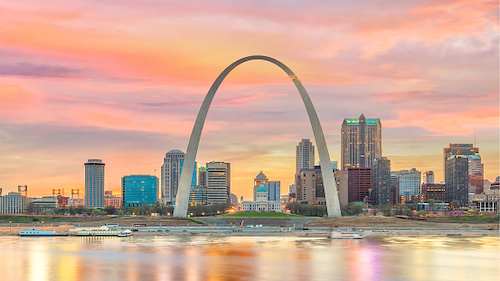ACEE Issues Paper on Building Retrofits
THURSDAY, JUNE 25, 2020
The American Council for Energy-Efficient Economy recently released a white paper that calls for cities and states to mandate retrofits of inefficient buildings by requiring them to meeting certain standards carbon emission caps.
The paper, entitled, "Mandatory Building Performance Standards: A Key Policy for Achieving Climate Goals," also outlined 10 areas that it says are leading the way with their energy policies.
ACEE ads that building performance standards could greatly reduce the nearly one-third of U.S. greenhouse gas emissions that come from buildings. If standards are applied to two-thirds of existing buildings, that could reduce carbon emissions in 2050 by more than the current annual emissions from all buildings, power plants and vehicles in New York state.
“We have lots of good voluntary programs that help building owners improve energy efficiency, but the truth is they’re just not nearly enough when you look at the climate math,” said Steven Nadel, report co-author and executive director of ACEEE.
“Most buildings today are going to be in use for decades to come. If we don’t put any limits on the carbon they’re responsible for, we’ll be locking in terrible climate impacts. Building performance standards are an effective response because policymakers set overall limits and let the building owners decide which upgrades they’re going to implement to meet them.”

 |
| f11photo / Getty Images |
|
The American Council for Energy-Efficient Economy recently released a white paper that calls for cities and states to mandate retrofits of inefficient buildings by requiring them to meeting certain standards carbon emission caps. |
The 10 areas the report listed include:
- Tokyo;
- Boulder, Colorado;
- The United Kingdom;
- The Netherlands;
- Reno, Nevada;
- France;
- Washington, D.C.;
- New York City;
- Washington state; and
- St. Louis.
Policies in these areas typically require existing buildings larger than a specific size to meet certain energy-efficient standards.
St. Louis
ACEE noted that many of the regions it highlighted, even outside of the top 10, have enacted standards just within the past 18 months.
The mandate, signed by Mayor Lyda Krewson, sets energy usage requirements for commercial, institutional, municipal and multi-family buildings that are 50,000 square feet or larger.
According to Catherine Werner, Director of St. Louis Sustainability, large buildings make up about 80% of the city’s total greenhouse gas emissions, which is why they were targeted by the new regulations.
The ordinance also establishes a Building Energy Improvement Board (made up of nine members representing utilities, labor, affordable housing owners, tenants and commercial buildings), to review the energy usage for buildings with the goal of reviewing and updating the standards every four years.
It also creates an office in the city’s building division to assist owners in reaching compliance with the standards, which they are expected to do by May 2025.
The city as a whole has a goal of eliminating community-wide greenhouse gas emissions by 2050.
Board Bill 146 applies to commercial, residential and multifamily construction. Lawmakers cited energy savings for the push.
The requirement is also in compliance with the 2018 International Energy Conservation Code and goes toward the Michael Bloomberg initiative (which the city is a member of) to fight climate change.
Legislation Elsewhere
St. Louis is the latest in a handful of cities that have mandated energy performance standards into their building codes, most notably seen in New York City with its Climate Mobilization Act.
In April of last year, New York City council approved a package of bills and resolutions—known as the Climate Mobilization Act—intended for radical energy efficient improvements. The act requires that all new residential and commercial buildings in the city have green roofs made up of either plants, solar panels or small wind turbines—or a combination of all three.
Also last year, Nebraska updated the state’s energy codes for residential and commercial buildings for the first significant time in a decade, taking cues from both Boston and Ontario, which updated their regulations to get new construction as close to net zero as possible.
In 2018, Denver passed its Green Roof Initiative, which not only requires new, large buildings to be constructed with green roofs, but also requires buildings of a certain size to install a green roof when the current one is up for replacement.
Also at the end of 2018, California’s Building Standards Commission gave the final approval for codes that mandate the requirement for solar panels on new homes making it the first state to have such a rule. That is slated to take effect this year.
Tagged categories: Emissions; Energy codes; Energy efficiency; Maintenance + Renovation; Retrofits









